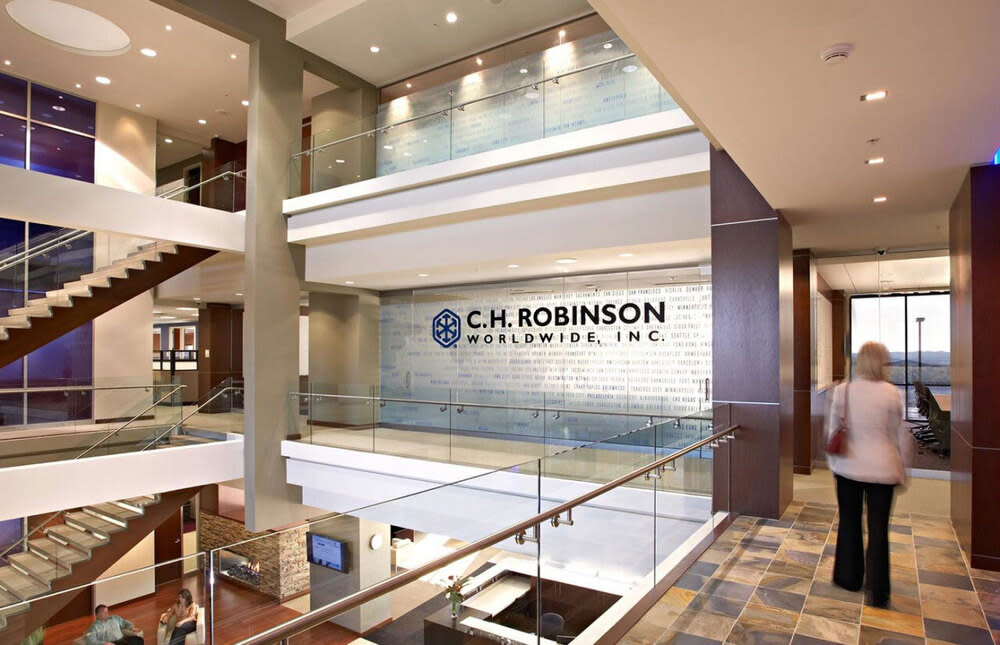Whether you’re overnighting a last-minute gift, hunting down the never-in-stock item on your shopping list, or gifting yourself a new gadget, there’s a world of products at your fingertips—often just a few taps or clicks away from your doorstep. You can peruse a local brick and mortar or shop from the comfort of your browser, and your experience stays the essentially same: search, discover, checkout, and get excited.
It’s simpler than ever to find exactly what you’re looking for. But behind all of your purchases is a complex network of retailers, manufacturers, and transportation services—coordinated at scale by industry experts. C.H. Robinson is one of these experts, a third-party logistics provider that seamlessly connects the dots between suppliers and your favorite shops. The company works across industries to keep more than 124,000 customers moving over highways, railways, and airways around the world.
At the core of this interconnected operation is code: software that over 900 engineers around the world build and collaborate on using GitHub. Twenty-five percent larger than it was seven years ago, the IT team at C.H. Robinson is growing fast from all corners of the globe. Over 80 percent of the IT organization works from Eden Prairie, Minnesota with additional offices in Amsterdam, Kansas City, Melbourne, Shanghai, and Warsaw.

To build better experiences for the customers who rely on them, the organization chose GitHub to kick off a fundamental transformation in the way they work. From locked down code to open collaboration, the team has seen a cultural shift in the last few years that’s lead to effortless onboarding, reliable DevOps workflows, and better code, faster.
Before GitHub, we lacked visibility into code developed by other teams.
With 20 new engineers added per quarter, repeatable, scalable workflows are an increasingly complex challenge. As Senior IT Manager Tyler Patterson explained, Before GitHub, we lacked visibility into code developed by other teams. There was a reluctance to share and reuse code because it raised questions of who was responsible for future maintenance.
A growing dedication to openness and transparency has driven C.H. Robinson’s new status quo. Specifically, the team has adopted open source best practices to their proprietary software development—a methodology called innersource. Innersource has a range of benefits, from morale boosts to cleaner code. For C.H. Robinson, it kicked off a new, more collaborative way of working that brought down development roadblocks.
To get to where they are today, the team started small. In 2015, they kicked off the transition to innersource with a few incremental and purposeful changes. An eight-person architecture development team ran an experiment to reimagine the future of the company’s software lifecycle. When the experiment lead to productive new ways of working, it spread. Quickly, GitHub became home to nearly all of C.H. Robinson’s code.

As more engineers across the organization adopted GitHub, it became clear that most were already familiar with the platform—making it easier to onboard existing teams and new hires alike. We polled 25 new hires when we made the decision to move forward with GitHub, Patterson recalled, We were impressed that 23 had GitHub experience. They’re just good to go.
Patterson has also found that it’s been easier to recruit engineers with an updated toolset. In interviews, he can find common ground with potential candidates that see source control as a necessity. I don’t know if it’s becoming a differentiator as much as an expectation from engineers, he noted.
Meanwhile, C.H. Robinson IT Leader Lindsay Bennett thinks holistically about the direction the team’s ecosystem of tools and process. She appreciates the simplicity of having all of the team’s code and documentation on one central platform.
GitHub has become one of our main sources of sharing information across teams and really empowering engineers with more information—from checking out code to implementing new processes.
With all of their work in one place, the team could start building on GitHub with industry-leading integrations. Ultimately, they created a single, standardized DevOps pipeline that allowed engineers to focus on what matters most: code. The tools we wanted to use integrated well with GitHub, Patterson recalled, We could improve developer productivity, minimize context switching, and change the way all of our engineers worked.
How C.H. Robinson integrates with GitHub
Project management: ZenHub
Automated UI deployment: Octopus
Static code analysis: SonarQube
Testing and production: Cascade
Gradually, engineers started building smarter by sharing, templatizing, and reusing code across the organization. Now, when developers start off new projects, they use templates, libraries, and tech stacks via the GitHub API that are supported across the organization, reducing hours of work to minutes. And instead of spending time on complex but repetitive tasks, engineers can rely on automation and focus their time on stability, compliance, and strategy.
Patterson has seen concrete results as product delivery picked up across the organization. We have a fully built-out DevOps pipeline available, he said, So in about five minutes, any engineer can have a compiling project in the appropriate tech stack that pushes all the way through to production from the start.
Automation is also picking up speed. The team uses GitHub APIs to automatically manage permissions, set access controls, and enforce security requirements. They can also process and interpret response times to code changes and other metrics as an integrated part of their workflows.

So far, an integrated DevOps pipeline and innersource workflows have reduced time and budget spent across engineering teams, while opening opportunities for teamwork, learning, and contribution. Manual and automated code reviews have decreased costly incidents. And more developers working in lockstep have sped up releases. The IT organization has also moved from big quarterly releases to a DevOps framework that supports delivering incremental value, resulting in a significant uptick in its DevOps pipeline—162% more deployments per week.*
GitHub has allowed us to increase our speed to market. We can move to production sooner and move on to the next high-value project as opposed to spending administrative overhead on staging, deployment, and rewriting code from scratch. We’re harnessing the power of talented developers across the globe. That’s what makes our IT world great.
Patterson and Bennett see GitHub as more than the foundation of their development workflow. [GitHub] is a source of truth, said Bennett. Engineers from across the organization can reliably share processes, learn best practices, and find projects to reuse, all in one place.
For Patterson and Bennett, GitHub’s most important role is similar to C.H. Robinson’s IT team: a single point of connection for craft know-how and industry knowledge. GitHub connects the organization’s engineers to code, expertise, and each other—setting them up to do their best work at scale and continue creating exceptional customer experiences.
* Reference: Naomi Eide, “At C.H. Robinson, open source adoption brings iterative, fast development — almost too fast” CIO DIVE, 2018.



